The use of wind turbines in households is becoming more and more popular. Wind power like other natural power sources can be quite volatile, but it’s still a highly sustainable power source for those who want to live an off-the-grid lifestyle. A Dutch renewable energy start-up called The Archimedes, developed this product named Liam F1 turbine which is a small and silent wind turbine that will change the way we view wind power. Their product will be able to generate 1,500 kWh of energy per year and can be installed on the rooftop of a house. The best part is, that when the Liam F1 is matched with solar panels, it can generate enough power for an entire household. This way you can alternate between the use of solar power and wind power, having a backup in case the weather conditions are not suitable for you.
-
 I bought this $5500 ... 4 months ago
I bought this $5500 ... 4 months ago -
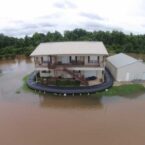 This Innovative Prod... 5 months ago
This Innovative Prod... 5 months ago -
Secret Tiny Home �... 5 months ago
-
 Tiny House Design 1 ... 5 months ago
Tiny House Design 1 ... 5 months ago -
 Chicken Earrings Egg... 5 months ago
Chicken Earrings Egg... 5 months ago -
 How Texas Homesteade... 5 months ago
How Texas Homesteade... 5 months ago
About us
Goodshomedesign is an online home design magazine but do not sell the products reviewed or showcased on this site. We try to show you what is new and beautiful in this area, arranged in several categories (apartments, ideas, interior design, home decor, home design, kitchen, bedroom, bathroom, furniture, hotels & resorts, architecture) related to the area and style.
Friends & Partners
Submit your work
Want to publish your own work?! Show us what you’ve got! We would love to check out the personal work created by any of our amazing fans. If you really have something good, we will publish it with your own name in our online magazine.
© 2025 Home Design, Garden & Architecture Blog Magazine. All rights reserved.

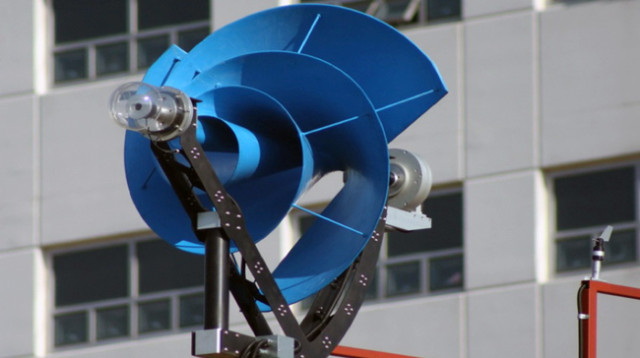
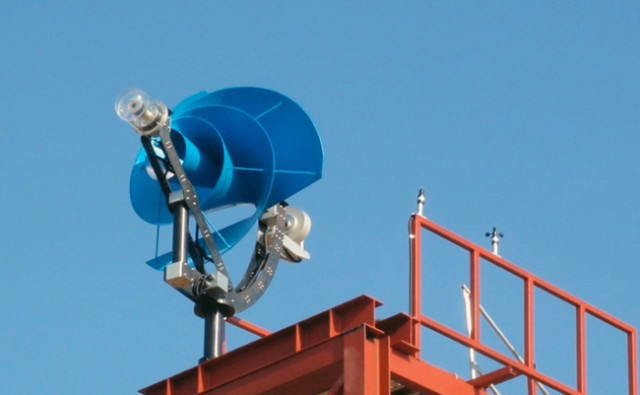
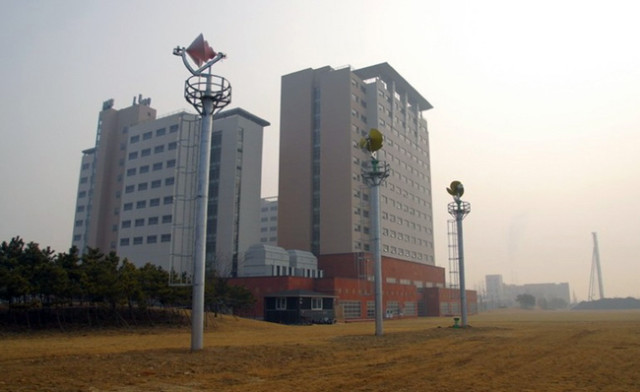






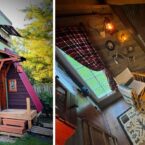


Err… Is the article about a wind turbine or solar power – seems to be some confusion!
The comment is made in the text that combining this wind turbine with PV could cover the majority of your electricity needs (particularly if you have battery or other storage).
No confusion. Wind IS a form of Solar!
so·lar1
ˈsōlər/
adjective
adjective: solar
of, relating to, or determined by the sun.
wind is NOT a form of solar energy.
Errr… And the root cause of wind is… Solar! The heat from the sun causes variations is atmospheric pressure, which causes wind. So wind energy IS solar energy.
Herb is correct, in that the sun is what powers the wind.
He’s being reductionist. The power of the wind comes from the sun. It creates heat that causes us to have wind. He’s being funny.
Well, being the pedantic type, it all really goes back to Nuclear power. Shit! a greeny just knocked down my (nuclear) turbine/solar array.
Plenty of wind and hot air here for sure!
Well, it would not help your house, but……
https://en.wikipedia.org/wiki/Solar_wind
😉
Sun is the source of all energy……
yeah ..coal is technically solar power …those plants grew in sunlight all those millennia ago….still lets not blur the lines
Nope. Explain how geothermal is energy from the sun please. How is the sun the source of energy generated by a nuclear reactor?
Geothermal is no powered by the sun..
How does the sun make uranium then for nuclear energy ?
Actually… there are 4 primary sources of energy available to mankind.
1. Solar (which includes ‘actual’ solar, along with wind, wave, hydro-electric & all fossil fuels (they’re nothing more than a very long-term storage battery for solar)
2. Nuclear. All forms of energy derived from splitting or combining atoms (strictly, solar is nuclear, but I think we can consider the two to be sufficiently distinct – let’s allow for ‘nuclear’ to be man-controlled, if we need a constraint on the definition)
3. Gravity. Tidal power (I can’t think of any others)
4. Geothermal. Anything to do with extracting heat from within the planet. Note than around half the heat inside the earth is a product of the planet’s formation, the other half is believed to be nuclear-derived.
…by that rationale, the sun is powered by nuclear fusion therefor the wind is nuclear powered.
Well, in that case, fossil fuel is “solar’. It takes “solar” energy to grow the plants that the dinosaurs ate. They died, rotted and turned into petroleum. Same goes for coal, but there the plants died and turned into coal.
Your argument is sophomoric.
ignorance is foolish mate
You kill me, that’s like saying a pig is a form of cow! Please. Get educated.
“Fossil fuels” are also a form of solar energy. Their solar energy arrived on earth a few million years ago, however, and was used by plant life to trap the carbon from carbon dioxide as coal or hydrocarbons.
To distinguish, we could consider the term “direct solar” energy.
For that matter, Oil and Coal’s energy came from the sun, too (just a long time ago)
coal power is solar too
Any off grid system should have both. I am constructing a system that has a third element of power generation…. Water turbine.
Nice design, kinda artistic, but practical. So, how much and what are the specs?
Please provide some technical details regarding the Roof Top Wind Turbine
Watching the video there is some data there; the 750mm diameter version is rated at 200W and the 1.5m diameter unit at 1kW.
My rooftop PV system nominally generates 5.76 kW and cost $24,000 delivered and installed in Vermont, before any incentives. It is sufficient to completely displace an electric bill of about $115 a month.
That’s about 17 years to pay off the cost of the system before you actually benefit from being self sufficient? How long is the warranty for this system? Totally serious, I would love to have solar or wind power, but not sure if it’s cost effective, especially if the system needs replacement, repair, or breaks before I could benefit after paying it off.
Your math assumes your energy supplier doesn’t raise their prices per kwH for the next 17 years and that his system only functions at the base or “nominal” level for that entire period of time. My rooftop system generates approx 6.34 kW and cost roughly the same after fed and local incentives. We did not finance the system and expect it to generate enough energy to offset the cost in roughly 7 yrs. It has a 25 yr warranty. Hope this helps.
So about a 17 year payback not including interest….so maybe more like 20 year.
Just for your information, 115$ because the price of 1Kwh is actualy low
Suppose that after 5 years the price is double, what will happen?
Try an online solar PV cost/benefit calculator.
Incentives can provide 30% in federal tax credits so a $24k system becomes $17k with the fed tax credit and in so. Calif your ROI would be about 7-1/2 years not accounting for future rate increases.
It’s even lower when you take state and local rebates into account.
That looks like a 17 year payback?
If you finance the panels through a solar power company (instead of buying them outright) then you don’t get the rebates, they do. So your total price will be what they quote you. They’re essentially giving you a loan, in exchange for the rebates they receive.
The company will arrange your monthly payments to be the same amount you used to pay the electric company, until the panels are paid off. That means you don’t start benefiting until the electric company raises its rates. Then you’re not affected, because you’re not paying them anymore—you’re paying the solar company and those payments stay the same. Once the solar company is completely paid off, then you get your electricity free.
1kW ? (And that’s assuming you’re getting a brisk breeze).
That’s not even enough to power my toaster, much less than my microwave – – and forget about using that pitiful amount of electricity to heat or cool your home!
your generator looks promising, how much would it cost a homeowner to buy one and get it in working order,?
How can we find out price of turbine if interested? We are in Northern WI, USA
Hi. I’m interested to find out more about the roof wind turbine. Also would like too know if it can be installed in Malta & how much it would cost. thanks
“Their product will be able to generate 1,500 kWh of energy per year” 1 year = 8766 hours, so this turbine will generate 1500 kWh / 8766 hr = 171 watts. Almost enough to light three 60w light bulbs. It will “could generate half of a household’s energy needs” IF the household wanted to live up to the lighting standards of, say, 1900. Never mind providing any power for heating, cooking, or washing which are a lot more than 171 watts. It is a nice little wind turbine and I would want one on my cabin roof for emergency power to my radio, but it is a long way from meeting half the needs of a household.
Guess you haven’t yet switched to LED’s!
LEDs won’t power my washing machine, stove, refrigerator, or heat pump.
I have to ask who is this day age uses conventional light bulbs? If your house is loaded with 60w light bulbs than maybe alternative energy is not for you.
From the website “Considering the electricity use of an average Dutch household lies around 3300 kwh (kilowatt hours) a year, it is possible to generate half of your used electricity by installing the Archimedes on your roof. “
Your maths are wrong…..kwh are the number of watts per hour, ie, in this case 1500 watts per hour, and, with the right wind speed. If the output was 1500 watts per hour over a year then the total output would be 8766 hours times 1,500, ie, 4383watts plus 8766 watts. However wind speeds vary from strong to nill, so output might only be 2 hours per day maximum, which would still give 3 kwhs of power, enough for most to live on.
sorry but you are reading this wrong it says and I quote ” Their product will be able to generate 1,500 kWh of energy per year.” That is per year.. I use between 22 and 35 kilowatts per day depending on the time of the year.. more in the summer for the pool and AC… so the total per year at an average of 25 kilowatts per day is only good for 60 days.. sorry they go to make it better then that for me .. and I have no incandescent bulbs in my house
Thank you for making this point. We use about 2200 kWh per MONTH. It would take 9 of these to provide half our needs.
Still, I am glad to see the technology. Someday, I hope it is feasible. If I had the money, I would seriously be looking into this kind of thing just to take pressure off oil.
1500 kWh is not 1500 kW – it means that it can generate 1500kW in an hour. See Stephen Heatley’s post above
Geez, really? Total kWh divided by the total hours annually (or minutes or seconds) is an entirely meaningless and pointless calculation.
I consume 10 kWh per day in my 3-bedroom so. Calif. house. 1,500 kWh would provide 138 days of power or 38% of my total annual electricity consumption and that includes charging my electric VW e-Golf. And yes, I have LED lighting, nat gas furnace and a nat gas water heater.
Please send details costs etc
To South Africa. Port Elizabeth. Actually Jeffreys Bay
Thank you
I always wonder why people don’t understand that a posting about an item is not necessarily from the originator and thus will not supply further information. Bestir yourselves and do some research people! If you enter the name of the thing you’re curious about into a search engine you too could find information like this dearchimedes.com/sales/.
Interested, need more information please
The claim that this windmill could meet half of a household’s energy needs is massively overstated and is only true for a superinsulated passive solar off-grid house with an efficient energy storage system in an area with high average/sustained windspeed
It’s ‘up to’ but most houses in most cities have very turbulent flow at rooftop level making rooftop wind turbines pretty much useless anyway. The values suggested would indeed be about 1/10 the amount required by a typical urban house, even if you could generate it. For most people this is a boondoggle.
If you look at https://selectra.co.uk/energy/guides/consumption/average-consumption-uk then 1500kWh is 1/10 the typical UK house requirement, and 1500kWh is production in ideal conditions. If you imagine PassivHaus and gas not being required for heating, and some sort of solar thermal to help with hot water then it might manage 1/2 a household’s energy needs. But that is an unusual house with ideal generation. So it would be great if you have a mountaintop PassivHause cabin, but not otherwise.
You relate to the smaller model right? The 1.5m model would do better no? A small battery bank might allow lighting, tv, fridge (ours uses 38watts an hour) and other small things to run on it I assume
I am interested to procure, trade and install. Kindly send me the detail specification and price
Regards
please send info and prices. Thank you
Ian Thomas
A typical house in California only needs about 10k kwH.
Two of these, and 10 solar PV and a couple of power walls from Tesla could make you grid free.
Nope. Just nope. kW is the instantaneous power output. kWh is a measure of energy and is kW x hours.
I want a wind turbine where do I order
Thanks for clearing how much they use to make an estimate of how much it produces. Unfortunately, this summer, we used about 3000 in our RV each month. Not a good option for South Texas summers.
You took my thoughts. Lol. Thanks.
Every Rush Limbaugh fan still use 60watt loght bulbs but many Rushsees will actually throw CFC light bulbs away ,some will also throw LED away
LOL. 1.5 KWh per year? The grid will provide the average house with 420 MWh per year. This is 3d world starvation energy.
This seems to be the manufacturer’s website. I’m waiting on a response from the US reseller.
dearchimedes.com/
-Don-
does it need water to convert energy?
Have this unit being sold world wide…?
what is its cost variant wise and maintenance ?
These specific wind turbines have been kicking about for years and years. Why no working prototype after all these years? Because they are a scam, they cannot work, they won’t work, ask any engineer and they will tell you that they are just plane stupid. They claim to generate 1500kWh per year – I have two responses to that… They won’t generate anything like that, in fact they probably won’t generate anything at all… And even if they did then that is 4kWh a day which is a tiny fraction of what a house uses. If you want t a wind turbine then buy a windy property out of town with access to the top of a windy hill and buy a normal machine from a reputable company.
Does anyone remember when the internet first started, how I believe its purpose was for information to be shared for people to get instruction on how to build things, and the planes were shared for free. Then greed took over as it always does and everything is for sale. Sad world we now live in today.
If the average US household power need is just over 10,000 kWh, how can 1.5 kWh be half of annual power need? Granted, this all depends on where you live, but the boasting has got to stop and manufacturers need to start developing products that can meet such expectations. We want wind and solar, but we need reasonably affordable and effective products to take advantage of these resources.
What the manufacturers of these small windmills generally don’t mention is the poor efficiency. While the turbine will start turning at low wind speeds, it won’t actually generate meaningful energy below 5,5m/s.
Gary I think you have zeros in all the wrong places. They said 1500 kWh not 1.5. Also the average home does not use 420 MWh a year. It is more like 4.2 MWh a year or 4200 kWh. So just shy of a third of the ‘average’ home’s energy consumption. If the average home used 420 MWh, electricity bills would be like ten grand a month.
Wind is the result of the heating of air by the sun. The heated air rises causing cooler air to move in to fill the lower pressure area. Think convection currents. Amazingly there are a lot of things happening which are really solar by products.
This is still in the design and testing phase. They started testing a larger one that will only be rated at about 500watts. It might supply half a homes needs if you are very conservative and live in a windy area.
my computer uses 100 watts in the time it took me to read this article and some comments I used tenth of a KWH if i spend another 2 hours of my free time on the computer that is three tenths of a KWH I shall we talk about running a washer machine 1000 watts for about 45 minutes then a gas drier using I do not know how much but figure a small house hold of 2 has to do a load of laundry on average this does not compute allot of things use electricity even your cordless phone uses some constantly if its plugged it and has a display when inactive its constantly using something so the old school microwave ovens with the dial timer are really energy savers the exact how a microwave works has not changed since they were first released to the public what has changed is the user interface I will say LEDs do save power
and having a more up to date computer saves power a really fast computer does not use more power then a slower one in fact when a really fast computer is using half its resources it will use less power to do that same task as a slower computer using its entire capacity the cost of a high end computer will never be off set by the power savings just allow you to do more in less time and cause less headaches in the long run from the lack of the need to upgrade and such I really can not justify the effort in terms of saving money for the most part I can say it would be nice to know if the power goes out your fridge is still running and your heat is still on but never gonna save enough soon enough sure you gonna end up ahead of the game before you retire not exactly worth it sure a company that started 5 years ago is offering a 25 year warranty and you hope to break even in 7 years I got news for you most of these systems break down in subtle ways like micro inverters you have 20 half break down in 5 years but your batteries still get charged and your lights still work but your savings are not their the company says all is fine another 2 years your warranty is over and the entire system crashes I like the idea not the execution
I think the best option is to have every circuit in the home on its own automated transfer switch for it to have its own charge regulator battery bank and inverter this is due to complications of scaling battery banks and the issue of getting batteries large enough for your entire home as one bank micro inverters are just a way to hide the failure of cheap BS hardware sure fail safe in concept but that just allows crappy hardware to be used and expect you not to notice when it fails
$24,000? Grossly overpriced. Might be $500 cost to build. Ridiculous
In a way the statement is correct. The sun causes the pressure variations that crrate wind.
So yes, wind is solar energy.
price is not listed on their web site. how much?
SO, I did not read the article, only the comments.
My conclusion from the comments is this.
Buy more solar panels because wind is solar power.
All a by-product of solar energy: Earth, Air, Fire, Water
Everything that exists is created by the sun.
It’s a wind turbine, not a solar panel.
Not artistic, natural and geometric. Its a mathematically sound shape.
the average american household uses 10,8 kwh of electricity per year so you’d need 8 of the larger units. You know where these things would go well? Put them on top of street light poles. Even thousands of the smaller units per city would have a big effect.
Anyone remotely familiar with off ged living knows you don’t try and power your heatpump, stove etc… with alt energy
that is bullshit about total cost for the system. as if the government would be paying the installers that sorry of money for a days work for 2 people and material cost of about 7000 maximum
How safe are these turbines for birds?
So 1,500 kWh of electricity is about $220 per year at fifteen cents per kWh. Unless this costs less than $2k including batteries and inverter it only makes sense in areas with expensive power like Hawaii or perhaps in remote locations.
Can you email some info please
I NEED TO KNOW MORE ABOUT IT. AND NEED TO PUT ONE AT MY HOME.
Wind Energy and Wind Power. Wind is a form of solar energy. Winds are caused by the uneven heating of the atmosphere by the sun, the irregularities of the earth’s surface, and rotation of the earth.
I work in solar and that’s actually about the average of half a household’s energy use over a year. I see hundreds of utility bills a week. And there are actually some people out there that use that little.
The Moon creates tidal energy.
Cut to the chase….how much is it and where is it sold?
Hello, has any research been carried out as to the effects on bats of these turbines? Birds and bats are affected by large wind turbines as we know because of the spinning blades…but what is the potential danger to bats from this product? Has anyone looked in to this? Thank you.
I’d be very interested to know what sort of cost these turbines are and are they readily available.
Currently have 7.5Kw of solar on the roof and have also been interested in combining it with wind when readily available and reasonably priced.
Everybody should be interested in houses small wind turbine tech , it’s more environment friendly than solar cells and they can be made more easily .
Its pretty, and it may have less noise, but does it produce as well as a cheap propstyle with the same 200W Generator?
The real question is what is the price and the ROI. Also, does it have to be installed on a pole or can it go on a home roof.
Payback for fossil fuels is an uninhabitable planet. Factor that in your calculations.
Can you get these in Australia? And if so what is the cost including install? Can you please send me more info?
I would love to try it for off-grid water pumping.
We have a farm with a water source at the foot. Without electricity, the headache is how to get this water to the rest of the farm.
All fine and well and worth looking at but how does it work in northern climates that get wind driven snow and sleet? Would I need to go and knock the snow and ice out of it or would sensors in the propellers get energy to heat from the battery array?
Wow, 1,500kW per year (125kW per month, 4kW per day). The average US househole uses over 900kW per month. I bet it costs about $5000 to have one of these installed and it will save a MN resident about $180 per year ($0.1148/Kw). That’s over 27 years before it pays for itself. I doubt these would last that long.
I will be interrested in 2 of these, please mail me more detail, pricing and shipping to Cape Town, South Africa
Just wondering why they’ve been put on posts on the ground rather than on top of the huge tower block right next to them. I’m fairly sure that it’s windier the higher up you go and more power could be generated. Is it because there is a limit to how much wind they can take?
They need to fit a welded wire cage around it to keep birds from getting killed by it.